The Amateur Traveler talks to Richard Miller of the SparkleTack podcast (about San Francisco history) about San Francisco.
Richard guides us in a driving/walking tour from west to east. We start at lands end and end up near fisherman’s wharf while talking about the sites and history of many of the places in between.
This is a great companion episode with the 2 part sound seeing walking tour of San Francisco:
- San Francisco Walking Tour (part 1) – Sound Seeing Tour 1
- San Francisco Walking Tour (part 2) – Sound Seeing Tour 2
click here to download (mp3)
click here to download (iTunes enhanced)
News
Travel News – Germany Rejects Scanners, UNESCO list grows, Travel Trends
- Germany rejects full-body scanners at airports
- UNESCO adds 27 new sites World Heritage List
- TripAdvisor Releases Travel Trends for 2009
Show Notes
SparkleTack podcast about San Francisco History
Works Progress Administration
Diego Rivera
Diego Rivera murals at San Francisco City College
The Story of Treasure Island
Playland at the Beach
Sutro Baths
Adolph Spreckels
Legion of Honor
Auguste Rodin
49 mile scenic drive
Panama Pacific International Exposition (the Palace of Fine Arts is from this)
The Exploritorium
The Wave Organ
San Francisco Maritime
Chantey Sing
San Francisco Blues Festival
Soundseeing Tour 1 – San Francisco (part 1)
Soundseeing Tour 1 – San Francisco (part 2)
CouchSurfing.com
75 Facts About The Golden Gate Bridge
Visit Alcatraz
Transcript
Chris: I’d like to welcome to the show, Richard Miller. Richard comes to us from the Sparkletack Podcast, which happens to be one of my favorite podcasts, it is a podcast about San Francisco history, and he’s come to talk to us about San Francisco. Richard, welcome to the show.
Richard: Thanks, Chris.
Chris: I thought about not having somebody else on a show talking about San Francisco, because I live within an hour’s drive of San Francisco, go up there all the time, and could easily do a show on myself, but I really am glad to have you on the show because you have so much more knowledge, for instance, of the history and such of San Francisco, that I’ve enjoyed in your podcast over the years. Now, we should be honest with people, because you’ve just been honest with the people on your show – you’re now actually an expat San Franciscan.
Richard: That’s true!
Chris: Living a little further north, up in the Pacific Northwest. But I really do appreciate you coming on, and telling us a little bit about ‘your’ – how do we refer to San Francisco now? – your distant home town.
Richard: I just outed myself in my latest podcast by saying I was an expat, as you mentioned, by calling San Francisco my first true and only urban love affair.
Chris: Very good!
Richard: We’ll leave it at that.
Chris: So, when you have a friend who comes with you to San Francisco, where would you take them? First of all, why should somebody come to San Francisco at all?
Richard: Why should somebody come to San Francisco at all? It’s just an unbelievable combination of natural beauty, of a sort of personal and cultural chaos, which I find very interesting in an urban environment, and its – and this is my personal angle – its, the history of the place is so incredibly rich, and not just rich, but obvious in the physical environment, in the built environment, and in what’s left of the natural environment that’s there. It’s just a fascinating place to walk in, and kind of let it wash over you.
Chris: So, when you take somebody to San Francisco, what do you take them to see?
Richard: I tend to just pack them in the back of the car and just almost start out driving in any direction, because there’s something to see wherever you go, but I do find myself attracted – and I think this is a natural human thing – attracted to the edges, and to water, so I tend to always end up out by Lands End and out by the Presidio, just kind of driving around the edge and seeing the sights out in that direction of the far western tip of the city.
Chris: And when we say Lands End, Lands End as I’ve just learned in this week’s episode of the Sparkletack, you used to have to get on a carriage and over a toll road to get out to see the Cliff House over there, so we’re way at the western edge of Golden Gate Park, for instance.
Richard: Exactly. It used to be that everything – well, used to be, there wasn’t much there at all – but it used to be that everything to the west of Van Ness Avenue was more or less sand dunes, and the city proper, when people talked about San Francisco, or Yerba Buena as it was called back in the day, they were talking about the northeastern quadrant of the city, and the rest of it was just mostly barren wasteland and they’d really never expected that it was even settleable, so the Cliff House out at Lands End, out at this far, far point, on some rocky cliffs overlooking the Pacific and some little islands out there, really seemed like the other end of the world. You still get that feeling a little bit when you drive out there.
What I like to do, is drive up along the Great Highway, which is the extreme West Coast, it’s a long flat straight boulevard, it drives past the Sunset District, it drives past the edge of olden Gate Park with those two beautiful old windmills out there, and the old – oh, what’s it called?
There’s a WPA Project building out there – the Beach Chalet, that’s full of WPA era, 1930’s era murals, there’s a little museum and gift shop there and a brew pub and restaurant upstairs. That’s a place I like to stop on the drive, and take people upstairs, have a grilled mushroom burger with avocado, or whatever they’re serving, a pint, and look out at the view, at the ocean, and enjoy the murals, the hand made, hand hewn beams, the ceramic dolphins or what have you that are stuck into the walls there, and just enjoy that spot. I understand that that building went through some hard times, as buildings often do, was a biker hang out and there was, you know, broken glass and graffiti – it was a place of ill repute for a good long time, but recently cleaned up, and it’s the great first stop.
Chris: That one I don’t know. I know the, when we say WPA, the Works Progress Administration from the New Deal, from FDR, I know the murals they did also in Coit Tower, are the ones that I’m more familiar with.
Richard: Exactly, yes. Same era, and, in fact, it’s a nice thing to bring up, because if you’re interested in that kind of thing – and who isn’t?! – there’s stuff like that tucked away really all over town, in fact, the murals from Coit Tower, I believe, were the first example of artists being hired by the Government to do work in the country. It was something that…
Chris: Oh, I didn’t know that, ok.
Richard: …a San Francisco artist, whose name escapes me, somebody will remember and comment on the Post probably, had been down in Mexico with Diego Rivera, and had seen what the Mexican Government was doing in getting artists involved with governmental projects, and he thought, “Hey, this is something that could work out where I’m from.”, and he ended up being responsible for importing Diego Rivera and Freda Kahlo to the 1939 World’s Fair out at Treasure Island, and there’s some art that Diego did out there, that is now at City College. The work that he actually painted in front of people, a giant mural, is now on display at City College in San Francisco, and that’s something that anybody can visit as well.
Chris: Interesting. And when Richard mentions Treasure Island, Treasure Island is a mostly man made island by the Army Corps of Engineers, halfway between Oakland and San Francisco, off the Bay Bridge, the site, originally, of a World’s Fair, and, as I learned from you I believe, originally targeted to be the location for the San Francisco airport, but…
Richard: Yeah, that’s right! Crazy thought. I still harbor a vague wistfulness that that didn’t come to pass, but you can still see them – I guess they’re little landing slips, water based landing slips, where the China clippers used to, sea planes used to fly out off to Hawaii and the Philippines.
Chris: Interesting. So I think I actually interrupted you – you were starting at the Lands End, and where to, from there? Whither from there would we go?
Richard: Well, after we enjoyed the WPA Building, we travel north along the Great Highway, you’ll pass – at the very end, you’ll know the end’s coming because there’s a steep upgrade and a curve – if you look to your right, you’ll see a bunch of condominiums, and what you should do at this point is feel sad because what used to be there was a fabulous something called “Playland at the Beach”. There were rides, Ferris wheels, clowns, ‘catch the brass ring’ kind of stuff, but that’s gone, so let that just drift out of your head, and then keep travelling north, and you will see something I believe is clearly labeled as The Cliff House. It’s the first big building on your left as you go up and around this sweeping curve, and the Cliff House, I honestly don’t know if it’s worth stopping there or not. It’s somewhere that I never go, it’s recently been renovated, depending on who’s counting, there have either been, I don’t know, five or seven different versions of this building. The first one went up, as you probably heard on my Podcast just last week – what year was that? – 1853 or something? Or ‘60 something? I’m not good with dates.
Chris: Before the great quake, before the great quake, before the 1906 quake? Is that the…?
Richard: Yeah! I think before the ’68 quake too. It was a good long time ago, but it was at a time when Mark Twain was in town, so let be a touchstone. That thing, it just, I don’t know if it’s cursed, I think there’s something about San Francisco at being at the edge of the world, being built on unstable ground, having burned to the ground, you know, six times before all the big earthquake even came along. This whole theme of things rising from the ashes – you can’t get away from it. The Cliff House is emblematic of this. They just keep falling into the sea, or having ships loaded with explosives drift into the rocks below and explode, all kinds of things going on.
Chris: Oh, I missed that story, ok.
Richard: That’s coming up, it’s coming up. What I’d recommend doing, is noting the Cliff House and thinking “Ah yes, there’s that thing that that guy mentioned.”. Ah, here’s the good thing; this is something I actually used to do all the time, when I had a weekend morning free, I would get on my motorcycle, ride out to Lands End, not go to the Cliff House, but go to this little greasy spoon diner called Louis’, or something like that. The food is not fantastic, it’s vinyl counter tops, it’s a greasy spoon in every way that you’re picturing that, but the view is the best view of any diner on the planet. It’s right on the edge of the cliffs, you’re looking out over the breakers towards Japan. There’s Seal Rock out there, which certainly you know, Chris, the seals have long since migrated from Seal Rock to Fisherman’s Wharf where the tourists are more generous with their handouts. From there you can see not just the water, and not just Ocean Beach spread out to the south, that you’ve just passed as you drove north, but you can also see down into the ruins of Sutro Baths. Sutro Baths, it looks like a Roman ruin down there, it’s a couple of big, concrete pits full of water. It used to be an enormous Victorian enclosed natatorium, a greenhouse style structure, with glass panes and elaborate ironwork, and it was the most popular joint in town, also accessible via the new railroads that were starting to link the city with the seaside back in – this was probably more like the 1880’s now – but it’s cold and wet out there, foggy, that’s the sad truth about San Francisco that many people, especially those who are visiting California for the first time, they’re thinking palm trees and tanning on the beach, that’s more than likely not going to be the result of a visit to the seaside. But this big, beautiful old natatorium provided a place where people could enjoy the water without freezing to death. It had heated water, it was pumped full of steam, they had waiters in tuxedos, and fancy snacks, and hot springs, and cold plunges, and high diving boards. It was an elaborate, fabulous thing. Now completely gone, but you can enjoy this view.
Chris: We should pause at this point, and talk about what time of year would you recommend people to come to San Francisco, because you’re right that I’ve certainly run, as you have, into a lot of tourists wearing the sweatshirt that they’ve just bought on Fisherman’s Wharf because they were coming to California in the summer and thought it would be warm. Quite possibly the sweatshirt emblazoned with the quote attributed to Mark Twain, “The coldest winter I ever spent was that summer I spent in California.”.
Richard: That’s right!
Chris: When would you recommend people come?
Richard: I’d say the best time of year is that period commonly referred to as ‘Indian Summer’. Late August and September. That is the best time of year, bar none. It’ll actually feel more like the summer that we San Franciscans know from television and movies! Sunshine, birds chirping, that sort of thing. That’s September. You can run into the odd, gorgeous day in the early part of the Spring, too; March, April, May can be beautiful too. The irony – and this is what captures the tourists in the sweatshirts that you’ve just referred to – is that the summer creates the conditions that bring that most famous element of San Francisco into being, i.e. the fog.
Chris: Right.
Richard: When it’s hot inland, and that cold current is coming down from Alaska, in the ocean, not to get too scientific, but that’s what makes the fog happen. I remember being a little kid, and riding down to see the San Francisco Giants baseball team play, and being so excited driving down on this beautiful hot summer day, and getting to the place where you could see the Bridge, and suddenly, you couldn’t see the Bridge, ‘cause it was under a floppy white layer! And that was it, and we’d all freeze to death for the day.
Chris: Yeah, we should just tell people that in the summer it can easily be fifty, sixty, in San Francisco, eighty, ninety, in San Jose where I am, and then further inland, it can easily be over a hundred, so, within an hour’s drive, you can get fifty degrees of change in Fahrenheit, on that scale.
Richard: That’s exactly right. My home town, up in the Gold Country, exactly, a hundred and ten at the beginning of the journey to fifty degrees at the end. Terrifying.
Chris: Ok. And where would we go from there?
Richard: After we’ve eaten a bowl of clam chowder or something at Louis’, you follow that road that’s passed by the Cliff House and by Louis’, and it will, sort of, wrap you around the point of Lands End and then shunt you onto Geary Street, heading east. Geary is one of the main arteries of the city, it’s one of biggest streets in town and it is actually kind of an adventure on it’s own. It crosses through all kinds of different neighborhoods; it becomes Chinese and Russian, and goes through the Financial District and so on, it’s an interesting street. In fact, I read recently that it was the site of the busiest bus line in the country. Stay off the bus. Head east on Geary until you get to 34th Avenue, and then make a left. What you’ll see, it looks as though you’re entering a golf course, and the reason it looks that way is because you are entering a gold course. Follow the windy road up towards your left, and you will see what looks like a French beaux arts, I don’t know, Versailles style palace at the top of the hill on your left, with a parking lot across from it. It might be worth your while to pull into the parking lot – whether you go to the museum or not is up to you – but the parking lot above the golf course has one of the best views of the City that you can have. You look down at the green, you know, it’s the emerald green grass of the golf course and you can see all the way across town to the skyscrapers downtown. You can see a number of different neighborhoods from there. It’s really spectacular. The museum – do you want me to talk about the Museum?
Chris: Sure, sure.
Richard: Ah, to tell you the truth, I don’t even know what’s in the Museum, right now, but I’ll tell you one thing that’s not in the Museum, and that’s the bones of Adolph Spreckels. As much as his dear wife wanted him and herself to be buried in the secret crypt that she had built into the Museum, that she donated to the City with her husband’s money, the Board of Supervisors found out at the last second, and because there’s a blanket ban on burying humans in the city limits of San Francisco now, since 1903 or something like that, she is buried in Colma along with everybody else.
Chris: I know you’ll also find some Rodin sculptures or casts of sculptures at the Museum, and then, as we say, there’s usually rotating exhibits through there also, so it’s a little tough to know exactly what’s going on there right now.
Richard: The nice thing about the Rodin, and I actually learned this recently, I sort of have this sad scene of sculptures, “No, these are copies, and the real ones are in Europe, and these are somehow second class.”, well, as it turns out, she bought those sculptures from Rodin. They are the real thing, in fact, it’s one of the biggest and finest Rodin collections in the country and Alma Spreckels, that’s who we’re talking about here, was the one who was primarily responsible for bringing that man to popularity in the United States, so…
Chris: Interesting.
Richard: Later on our tour I guess we can end up in Union Square and actually visit the woman herself on top of the pedestal, but we can go back to that. The thing to do next, after you’ve enjoyed Rodin and the fabulous view, is continue on that odd, curvy road. By the way, we are now in – and this in not to creep anybody out – but this whole park like area golf course etcetera, that we are walking across, or driving across right now, was once the largest cemetery in San Francisco, and, when they made the gold course, when they built the Museum, and occasionally still, when they do renovations and dig up plumbing and so on and so forth, they dig up parts of people that got left behind. Most everybody got transferred down to Colma when they built this thing, but they didn’t get everything, so stay away from there on Halloween night!!! The thing to do now, is to follow that road – there are no choices, just stay on the road – and it will take you through, you’ll go down a hill, you’ll have some beautiful views out on your left, across the Golden Gate. You’re actually, at this point, west of the Golden Gate Bridge, so you’re outside of the Gate, and in fact, this is a nice spot to pull over, or walk if you can, if you get out of your car and walk out to the edge, and look into the way the ocean flows into the bay, there, you can position yourself so that you don’t see anything built by human hands. This never occurred to me, Chris, until once, I was riding around there, I saw a bunch of people stop by the side of the road. I slammed on the brakes to see what they were looking at. It was the day the Tall Ships came sailing into the harbor, it happened this year. It was the most fabulous thing I think I’ve ever seen in my entire life, because everybody watching was dead silent. It was a Sunday, so there was not much traffic. You could actually hear the creaking of the masts, the slapping of the sails, and, as you looked across the water, you could see the water, you could see Marin on the other side, but you couldn’t see anything else, and it really felt, as long as you weren’t looking at the sweatshirt of the person standing next to you, as though you were in the 17th century, it was really, really cool. A nice spot. And then a helicopter comes over, and screws up the whole thing, but, for a moment… Continue down that road. The first developed area that you come to is one of the, if not the most exclusive neighborhoods in San Francisco. This is where our handful of movie stars live, our super rich, multi millionaires and so on, they live in this little neighborhood called Sea Cliff.
Chris: So that’s between the Presidio and the Palace of the Legion of Honor?
Richard: Yeah, exactly.
Chris: Ok.
Richard: Robin Williams lives there. I could show you his house. If you were in the back of my Honda, I’d be pointing out the window right now. Robin Williams and the topiary giraffe that’s peeking over his wall. Before you know it, because this is very short, you’re in the Presidio. Follow the road, in fact, as I look at my map here, I see that a large portion of this drive, that I’ve been pointing out, is part of a California ‘Official Scenic Drive’.
Chris: This is the 49 Mile Scenic Drive’?
Richard: Yeah. Exactly. Continue down and just drive all the way down until you get to – what’s the next thing to do? – there’s a couple of things you can do; you can drive through the Presidio and check out what’s going on there, I know that’s been under development since it came back into City hands / private hands. I’m not really sure what’s going on there now.
Chris: Well, former home of the Spanish Army, then the Mexican Army, then the U.S. Army, and now George Lucas!
Richard: Exactly! Ironically.
Chris: And so the ‘Clone Army’, or something like that I suppose!
Richard: Right, he’s building a digital army in the basement there at the old Letterman Hospital. This is a good spot, though; what we’re really close to is the Golden Gate Bridge and the foot of the Golden Gate Bridge, and, of course, there is no going to San Francisco without crossing the Golden Gate Bridge. You haven’t done it unless you’ve done that. So I would recommend noting that special time of year clue that we gave people earlier, September when it’s not foggy and warm, and just walking across and walking back. It’s a nice walk. It’s beautiful. Once you’ve made it back across, or before, if you like, you probably have noticed that there is a strange looking and old looking brick building at the base of that bridge, on the eastern side, and anyone who has seen Vertigo will probably recognize this building and this spot in San Francisco, as the place where Jimmy Stewart rescues Kim Novak from the waves. Fort Point – I’m not sure when that was built.
Chris: The Civil War as I recall. I think it’s part of the Civil War defenses of the City.
Richard: Mm hmm, ok, that makes sense. I think I know – maybe you can confirm this – that I don’t think that the guns were ever fired in anger from that site.
Chris: Not to the best of my knowledge.
Richard: Well, they have docent tours that they lead, and if you go inside, they have some nice little exhibits set up, and you can walk up on the roof, and actually get an excellent view of the reconstruction work that they’re doing on the Golden Gate Bridge.
Chris: You’re actually under the Bridge at this point, looking up at it, so, yeah.
Richard: That’s right. I think it’s almost as interesting as the Fort, to see what they’re doing to that bridge. They’re essentially rebuilding the thing, almost completely as people are continuing to drive over it, and retrofitting it and making it as earthquake safe as it can possibly be.
Chris: So I notice you had us cross it before we look under and see what they’re doing to it, so I think that’s probably a wise move!
Richard: Right. How about this – why don’t we park in the parking lot down at Fort Point? I guess we would have had to do that in order to visit the Fort – but leave the car there, and start walking along the shoreline, heading east.
Chris: Ok.
Richard: This is all part of the Golden Gate National Recreation Area. Crissy Field is what you’re heading towards. We’re still in the Presidio, so this is was all once Army territory. There were landing strips and who knows what all they had going on down there, but it is now a visitors center, marine sanctuary, nature preserve. Part of it is in fact a wetland, and there are some beautiful paths that, kind of, just winding paths, and wooden bridges and piers for people to fish off of, and on a sunny morning this is a fabulous place to take a walk just to people watch, to get a look at the Bay, dramatic views of the bridge. Some of the most beautiful photographs of the Golden Gate Bridge that you’ve seen have been taken from this vantage point. It’s just a great spot. I believe you can walk continuously from this point, along the coast, pretty much all the way to Fisherman’s Wharf, which is about half way across town. It’s probably, what, two miles or so? Two and a half miles? Not a bad walk – as long as we’re packed full of food from our two breakfasts! Let’s walk some of that off and just walk along this beautiful waterfront, until we get to – you’re going to be seeing it at this point – is the Palace of Fine Arts. This is a beautiful domed structure again a beaux arts style building. The dome is the thing you’ll recognize first; there’s an artificial pond out front, with swans swimming in it. Columns everywhere, it’s left over from the 1915 World’s Fair that was built here in the Marina District, which is unfortunately famous from the 1989 earthquake, where all the dramatic footage of burning buildings and scariness was taken from the air. But we’ll keep our fingers crossed, and walk through this neighborhood, enjoy the Palace of Fine Arts. It’s the one remnant of this whole neighborhood from all the way up, what is it, about six or seven blocks, up to about Lombard Street and east to Fort Mason, I guess, where the ground starts to go up. This was all filled in, this was all artificial land that was created especially for this Fair. It was covered with buildings like the one that you’re standing in front of now, so it’s kind of fun to stand there and imagine what it must have looked like back in the day.
Chris: And I would recommend, if you have kids and time, check out the Exploratory Museum in the Palace of Fine Arts, which is a wonderful hands-on science museum.
Richard: Chris, for my money, that’s the coolest museum in town, I mean, kids or no kids.
Chris: Well, yeah, if you are a kid like me!
Richard: It’s a wonderful place.
Chris: Kids of all ages!
Richard: Exactly. Well formulated. Yeah, I love that spot.
Chris: The other thing that we haven’t talked about, that I think most tourists don’t know about, is the The Wave Organ.
Richard: Oh, that’s right, I walked right past it.
Chris: I think you were just about to.
Richard: Yes, thank you. You’ll notice, as you walk along the waterfront there, that there’s a long stretch of what looks like a typical urban park, but it’s right along a yacht harbor. On the northern side of that harbor, towards the Bay, there’s – it’s a little hard to describe – you’re on Yacht Road, basically walk around the western edge of the yacht harbor out on to the spit of land that’s looping out towards the east from the shoreline, and just keep walking east on this spit. You’re walking through a parking lot, you’re walking through some gates that look like maybe you shouldn’t be walking through them, but don’t worry, it’s fine. Just keep walking until you can’t walk anymore, and you’ll find this strange little “Mm, what is it?” Something that looks like it’s submerged…
Chris: I was hoping you could describe it!
Richard: Something that looks like the ruins of Atlantis. There are chunks of marble, there are pedestals, and capitals of old columns, there are bits of old tombstones, but arranged clearly, not just thrown down there, arranged like a mini park. There are places to sit, there are different levels to hop across, but the most interesting thing about it is that there are these strange, what look like concrete covered submarine periscopes, poking up and out from various locations. And what these are, these are tubes that go down into the water, through the rocks and open into the bay, and what you are standing on is a large experimental musical instrument. The sound of the bay, the movement of the water, pushes water through the tubes and makes the most – have you been out there, Chris?
Chris: I have not, no.
Richard: Ok. The sounds are, when it’s going well, and sometimes there’s not much going on, or, I don’t know, the pressure not right or who know what it is, but sometimes you go out there and it’s like a herd of whales. These belches and moans, and high pitched squeaks, and all kinds of crazy sounds. I believe this was the brainchild – speaking of the Exploratorium – this is the brainchild of a scientist who worked at the Exploratorium. He made a small model, he heard this effect happen at some other pier, somewhere, and thought, “Mm, there’s musical potential here!”. Got a small grant, and put that thing together. Definitely worth a visit – one of the secret treasures of the City. Not too many people know about it. I don’t believe I’ve ever mentioned it to someone who knew what it was or where it was. At most, people may have heard of it, but they’re like: “Where is that, exactly?”. It’s a great experience, and, even if the music isn’t happening, because of the way this little spit kind of pokes out into the water you really feel almost as though you’re standing on an island in the Bay. And Alcatraz looks so close at that point, you feel as though you could pitch a rock and bounce it off on to the walls. It’s a great spot. Well, we’re getting perilously close to Fisherman’s Wharf, I think we’ll get as close as possible, and then veer away.
Chris: Which is how I always like to deal with Fisherman’s Wharf!
Richard: There’s a force field, actually. I haven’t been to Fisherman’s Wharf since I was probably 10! That’s fine.
Chris: So normally I ask guests what we should avoid that are recommended by the guide books, and as you can hear, both Richard and I are recommending that Fisherman’s Wharf is mostly just a tourist trap.
Richard: Yeah. Almost entirely. If you like sea lions, they are visitable there, since they’ve abandoned their old rock, out at Lands End, but past that, it’s hard for me to imagine what would be attractive out there.
Chris: Well, and they’re mostly at Pier 39 anyway, which I actually recommend Ghirardelli for the ice cream and Pier 39 for the sea lions, and then also they have some of the best street performers who are performing there.
Richard: That’s true. Plus the ‘Bush Man’!
Chris: Well, he’s somewhere out there and in between.
Originally uploaded by jochenWolters
Richard: Ah, you know, there is something in this neighborhood that’s absolutely worth a visit. Ghirardelli Square does have it’s points and it’s a fantastic structure, and it’s an excellent example of what public private partnership can do to a giant moldering building in the middle of a city. It’s a total success story. But the building that I really like in this area is the Maritime Museum. This is a fabulous building. It looks as though, if you gave it a shot, you could send it out to sea and it could sail across the water to Japan. It looks like a giant 20’s era, streamlined ship. It’s gorgeous, this building. And it turns out, it used to be a bath house, but now it is – well, I guess I gave away what’s inside by calling it the Maritime Museum – all things relating to navigation on the water. There are several levels, and they cover every era of water craft in California, and San Francisco in particular. You’ll see it’s got everything from the native American canoes that were here before any of the white folks got here, all the way up through wind powered stuff, steam powered craft. There are models of engines, models of ships, if you’re at all into anything that has to do with the sea, this is a must visit location. It’s a beautiful building as well, with deco style entrance and tiles, and big murals, and so on and so forth. Another fabulous place.
Chris: And if that weren’t enough, there are some real, full size ships anchored quite close by there, including what was fun for me: a World War 11 submarine. So, if you are not a big fan of claustrophobia, something I enjoyed.
Richard: Right! That’s out at the Hyde Street Pier there.
Chris: The Hyde Street Pier.
Richard: The Balclutha is anchored out there as well, the tall massive wooden ship.
Chris: Right.
Richard: Did you ever have a chance to visit that one, Chris?
Chris: I haven’t, my kids have actually spent the night on it as part of a opportunity, through their schools.
Richard: Ah, great!
Chris: They didn’t enjoy it quite as much, because I guess they treated them as if they were actual sailors in the 18th century which really just…
Richard: Swabbing the deck.
Chris: Swabbing the deck, getting up for watches in the middle of the night and eating more or less what they ate at the time, so.
Richard: Well, I hope some character was built. My favorite thing about that particular ship then, if you are visiting San Francisco and you can time it right, once a month they do a chantey sing.
Chris: Oh, wow, interesting.
Richard: They sing pirate songs, old work songs and that is something that I went to, kind of on a whim, and went to every single occasion that it was held for the duration of my time in San Francisco. That’s a real secret thing to do. It may not sound like it’s entertaining or fun, but the group of people that are there are such an interesting crew, I mean, there are hipster kids in the back row with multi colored hair doing their knitting, you know, there are ancient creaky guys in pea coats with long beards, there are 60’s leftovers strumming banjos and mandolins, and everybody knows the song, and people just stand up and start singing. And in this space, you know, you’re on a ship and you can feel it rolling in the water, and so on. It comes to life, and everybody sings along. It’s a great thing. I believe you can find information about that at the Park Services website, the Hyde Street Pier. Hyde Street Historical Pier have a website that’s affiliated with the Park Services. They’re a little judicious Googling should lead you to the right place.
Chris: Well, this is either becoming, either one of my longest episode, or a two part episode! Are there other things we should recommend, as we’re in this area?
Richard: In this area, Fort Mason, which we kind of skipped across. We went from the Marina to this Ghirardelli Square Maritime Museum – Aquatic Park Area, I guess is what it’s called – in between there, there’s a big park, Fort Mason. It used to be another military deal. The Blues Festival is held on a big park up at the top of the bluff every year, but, unless you happen to be in San Francisco in, I believe, late September, you’re going to miss out on that, so I think I’m more or less done with this neighborhood. I mean, as you head east from here to Fisherman’s Wharf and so on, a lot of this stuff is covered by every guide book that you can possibly find.
Chris: Mm hmm. Well, and the other thing we should tell people, that you’re unaware of, is that I have done actually a two part walking episode of San Francisco a couple of years ago starting in the opposite end of the City. Actually doing a part that we haven’t talked about, which is Chinatown and Union Square and Coit Tower, and then I think mentioning at this point, the other places that you would be looking at, at this point, would be Alcatraz.
Richard: Right.
Chris: The only thing to tell you is that if you are interested in visiting Alcatraz, and I would certainly recommend it, and doing the guided audio tour there, is book early. Get your reservations for that either early in the day or days ahead, because that will book up, especially in the summer tourist season.
Richard: Oh, I can imagine.
Chris: We’re going to have to probably start winding this down. What are the last three things that you can’t leave San Francisco without seeing?
Richard: Oh, God! Well, I don’t think you ought to skip Golden Gate Park, no matter what time of year it is. It’s just such a beautiful place to walk through, remembering, or trying to remember that it was once nothing but sand dunes. It’s hard to picture, even if you know that’s the case, but it’s a completely artificial environment. One of the ironies about San Francisco being such a densely built city, is that there’s far more vegetation and animal life in San Francisco today than there was before humans arrived.
Chris: That’s very ironic. Ok. It never occurred to me, but that makes sense. Interesting. And actually with Golden Gate Park, we should mention the newly reopened California Academy of Sciences is actually trying to give the Exploratorium a run for it’s money as one of the most interesting museums in the City. So that’s brand new, that just reopened this summer, and it’s been major renovations there and it’s definitely receiving rave reviews. I have not been there yet.
Richard: Nor have I. They were building that crazy giant sphere in the middle of it, the last time I was down there.
Chris: Right, exactly.
Richard: I couldn’t quite picture what was going to happen, I just read that – I think this is right – in the de Young museum right across whatever that place is called, the music concourse, King Tut is coming to visit shortly. I’m actually wishing I was in San Francisco just to see that! I missed it back in the early 80’s or whenever the last time he came to our shores but that’s a good reason to visit right there.
Chris: And the other thing that’s a sort of a perennial favorite, and I think definitely in the guide books, but I think there’s still a lot of people like it both from tourists as well as in the City, is the Japanese Tea Gardens in the Golden Gate Park, as long as you’re in that area.
Richard: Mm hmm, yeah.
Chris: I remember really enjoying that as a kid especially, because it looked so different from what I was used to.
Richard: Exactly, and, of course, there’s a historical angle to this as well. That tea garden is actually the place where the fortune cookie was invented.
Chris: Now I understand you’ll have some debate from that from someone from L.A., which will claim the fortune cookie also, but…
Richard: Well, I should appeal to the San Francisco ‘Court of Historical Review’ that has already decided officially that the Martini was invented in San Francisco, and so on and so forth. I have to do my patriotic duty here.
Chris: And I believe the Irish coffee was also invented in San Francisco, as the…
Richard: Yeah! Certainly popularized. I hope if you didn’t mention that in the other episode…
Chris: I didn’t actually.
Richard: It’s a terribly touristic thing to do, but it’s actually very satisfying, especially if you show up on a foggy day The Buena Vista down there at the foot of Hyde Street, with the cable cars climbing by and so on, a little Irish coffee definitely takes the edge off. Be a nice reward for the long walk, the forced march we just took everybody on.
Chris: Actually, yours was easier than a forced march I took them on in my walking episode, ‘cause I was doing all the hills. You were doing the edges, so. If you do subscribe to the theory that the fortune cookie was invented in San Francisco, we know it wasn’t invented in China, then there is also at least one small working fortune cookie factory in the City that you can go, see the ladies making the fortune cookies there. The Golden Gate Fortune Cookie Factory there in Chinatown.
Richard: Yeah that’s right. Right there on Ross Alley, and the best part of that they have a little basket full of broken ones that you can snack on and take away for free. A picture, however, is going to cost you a dollar.
Chris: A picture is going to cost you a dollar, that is correct. What’s the best day you’ve had in San Francisco?
Richard: Hmm. I can’t think of a specific one, but it’s probably going to start out with that motorcycle ride out to the cafe at Lands End. I’d love to start a day out that way with the fresh air, a nice base level of grease established in my gut. But then, I’m actually going to go somewhere where we haven’t gone in this episode, which is where I have mostly lived in San Francisco. I’ve lived all over town; I would try a different neighborhood and always end up back in the Mission District.
Chris: Ok.
Richard: So I would go back to the Mission District, and there’s nothing special about what I would do, I would just walk around. That’s what I do in every city that I visit. My favorite thing about the urban experience is comfortable shoes, and just walking around, seeing people, stopping into cafes, stopping into bookstores, enjoying the street life of that neighborhood. That’s, for my money, the most vital area of town, Valencia Street, Mission Street, 24th Street, that old neighborhood. So I would spend the day at cafes and bookstores.
Chris: Ok. And people always ask me this, and I don’t have a great answer for them – where would you recommend staying in San Francisco?
Richard: Oh God, yeah, I don’t have any answer for that at all. Let me make one up. I’ve had good luck with this website called CouchSurfing.com. Have you heard of that?
Chris: Sure, sure.
Richard: You have to have a little bit of trust and spirit of adventure to pull this off, but you meet some nice people this way, not pay boutique hotel prices, and maybe get an insider’s look in the city. You know, I’ve always wanted to stay in the hotel on Union Square. What is it? Remind me of what it’s called.
Chris: The Sir Francis Drake?
Richard: That’s the one, yeah, that’s the one.
Chris: With the gentleman outside in his fine regalia?
Richard: Yeah, that’s right. Exactly. I have no idea what that costs, what it’s like, so I’m sorry, I’m going to have to say “Not my area.”. If I still lived there, I would offer you my couch.
Chris: I appreciate that. When we do a show on the Pacific Northwest we can give people that deal.
Richard: Excellent. I’ll have to start doing my homework!
Chris: What’s one last thing you think people should know before they go to San Francisco?
Richard: What people should know before they visit San Francisco, is that I have discovered that, since it’s founding back in 1835, people have said consistently and constantly, “Aah, it was better last year, it was better ten years ago, it’s gone to the dogs! This place is getting ruined! You know, this has happened, that has happened…”. People have been saying that for as long as there has been a San Francisco. So you may hear that. The truth is, though, that that is absolutely true, and it’s not true at all. San Francisco is always changing, and, just by being there, you’re participating in that endless forward movement. So just enjoy being in that spot at that time and take it all in.
Chris: The one thing I would say, if we’re talking about going – we’ve poo-pood going in the summer, or at least told people to bring a sweatshirt – probably it’s more of the latter for me, because, of course, I go more in the summer than any other time, because there’s this wonderful new baseball stadium they’ve built, and, being a fan of baseball, it’s probably one of the prettiest ones in the country. In terms of resources to plan the trip, I’m certainly going to recommend, if you want to know a little more background abut San Francisco, you check out this Sparkletack website and check out the many, many editions that Richard has put out already, where I learned things about things like – Caruso singing during the 1906 earthquake was probably one of my most memorable things from there. Richard, if you had to summarize San Francisco in three words, how would you possibly do that?
Richard: Colorful, cultural chaos.
Chris: And that sounds just like driving in San Francisco.
Richard: That’s right! I actually miss that.
Chris: Richard, thanks so much for coming on the show and telling us about your favorite urban destination in San Francisco.
R. It was my pleasure, Chris, thank you.
+Chris Christensen | @chris2x | facebook
10 Responses to “Travel to San Francisco, California – Episode 159”
Leave a Reply
Tags: audio travel podcast, california, podcast, san francisco


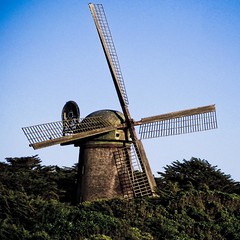
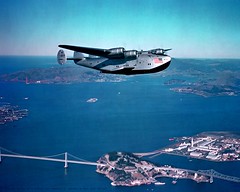
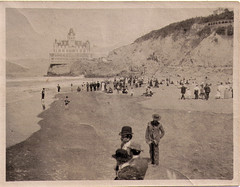

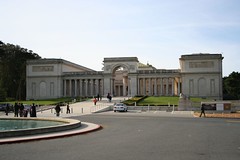


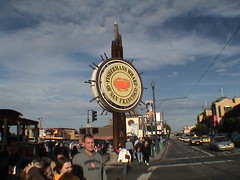
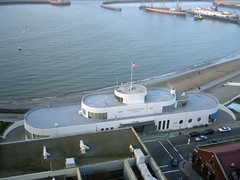


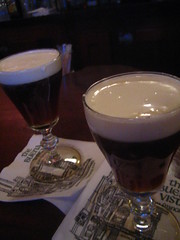
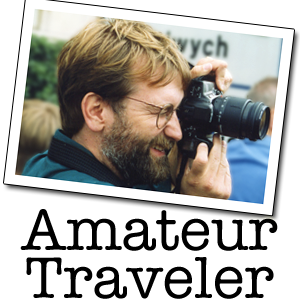 Travel to the Marin Headlands Area of the Golden Gate National Recreation Area – San Francisco, California – Video Episode 43
Travel to the Marin Headlands Area of the Golden Gate National Recreation Area – San Francisco, California – Video Episode 43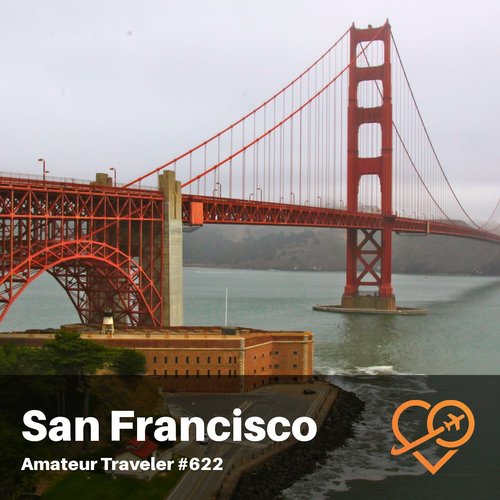 Travel to San Francisco, California – Episode 622
Travel to San Francisco, California – Episode 622 San Francisco Walking Tour (part 2) – Sound Seeing Tour 2
San Francisco Walking Tour (part 2) – Sound Seeing Tour 2 Exploring the San Francisco Hills – California
Exploring the San Francisco Hills – California

Craig Mullins
Says:November 8th, 2008 at 2:11 pm
Wher/how do you continually do all this research? I have lived here all my life & the things you find are amazing.
San Francisco, California - Amateur Traveler Episode 159 « Amateur Traveler podcast
Says:November 8th, 2008 at 3:19 pm
[…] Francisco, California – Amateur Traveler Episode 159 Episode 159 at Amateur […]
Richard - Sparkletack
Says:November 12th, 2008 at 11:30 am
Hey Chris, thanks for the opportunity to talk myself hoarse! I had a swell time doing it, and I hope it shows. (“shows” doesn’t quite seem right for audio, does it? Best I could do. 🙂
@Craig: The history of San Francisco is visible almost everywhere in the city … with the help of, say, a library card, my show, and just starting to pay attention, these stories will just start leaping out at you!
Andy
Says:November 13th, 2008 at 6:21 am
Great episode! Just one thing… there’s a mistake in your iTunes version… you typed “San Franciisco”… Bye!
chris2x
Says:November 13th, 2008 at 7:58 pm
Oh bother, someday maybe I will learn to type.
Michael Roberts
Says:November 15th, 2008 at 3:12 pm
I am a big fan of sparkletack.com and Richard Miller’s brand of story telling. I have listened to all of his podcasts, some two or three times, and visit his website frequently. I live in the Pacific Northwest but try to get to SFO at least twice a year to emerge myself in the history and culture of my favorite city.
I especially enjoyed episode 159 and the armchair tour of the City by the Bay narrated by Richard.
Michael Roberts
Vancouver, WA
Flug
Says:November 25th, 2008 at 9:58 am
Nice episode! So easy to imagine to be physically there.
Travel to San Francisco - Amateur Traveler Episode 159 Transcript | Amateur Traveler Travel Blog
Says:January 6th, 2009 at 8:48 am
[…] Travel to San Francisco (episode 159) of the Amateur Traveler I interviewed to Richard Miller of the SparkleTack podcast […]
Bay Area Wedding Photographer
Says:February 3rd, 2009 at 11:01 pm
I’ve been to about 1/2 of the places highlighted and want to see many more of them!
Savio Wong
Says:December 29th, 2017 at 10:30 am
I am spending a couple of weeks visiting family in SF. A couple of days ago, Dec. 26, I listened to the 2-part walking tour as I was taking the similar routes. Co-incidentally, the podcast was taped some years ago, exactly on Dec. 26 as well.
I always check out your podcasts when I visit or re-visit a city because I find your advises sensible and I usually learn something new. Thank you.
BTW, may I suggest a few sites for the bibliophiles who are visiting SF.
1) The American Bookbinders Museum in SOMA. Although it is small, the daily guided tour is very informative.
2) The Arion Press on the edge the Presidio Park in Richmond. Definitely do the guided tour, which is only offered once a week, on Thursday at 3:30pm.
3) City Light Books on Grand and Columbus. It may have been mentioned in the walking tour but I don’t remember.